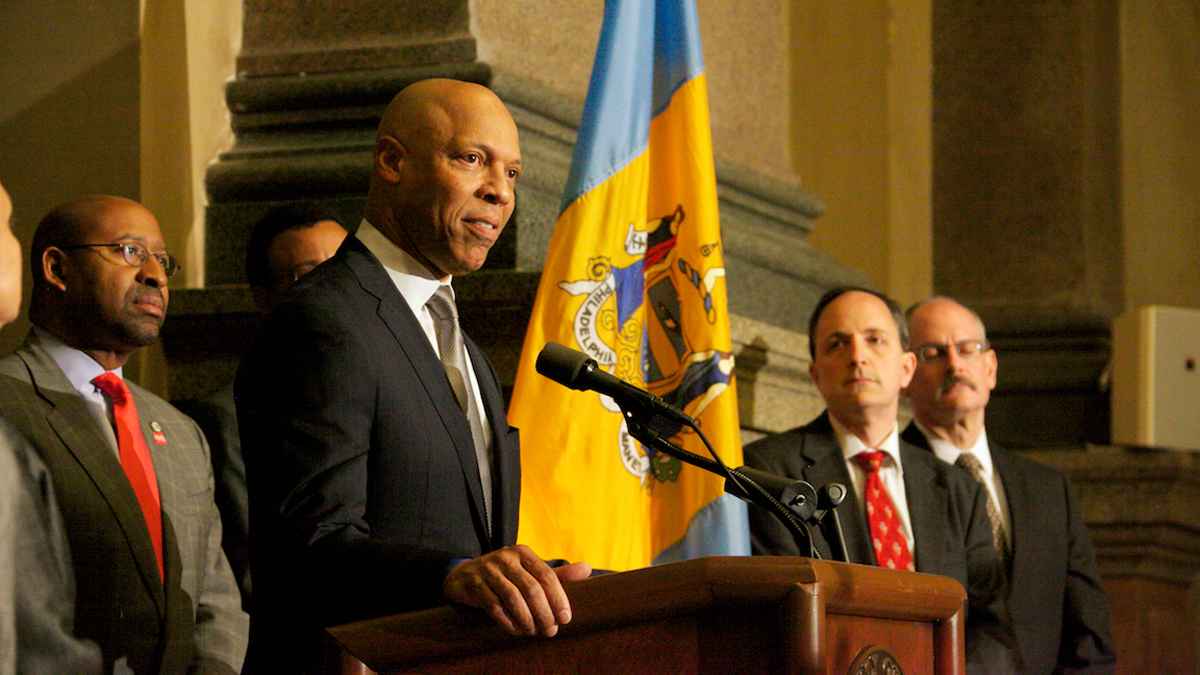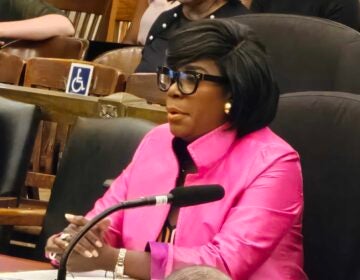Squeezing school $$ from tax delinquents: $28 million is in the balance

This article was made possible through a partnership between The Notebook and PlanPhilly
As bad as the school district’s projections for this fiscal year already are, the actual bottom line could turn out even worse if the City of Philadelphia fails to deliver on its promise to squeeze an additional $28 million out of tax delinquents over the next 10 months.
That cash – a key element of the hastily assembled and still incomplete bailout package put together this summer – has been overlooked amid labor strife and the political wrangling between the mayor, City Council and the state.
And unlike the district’s hoped-for $130 million in projected labor savings and the $45 million one-time state grant, the pumped-up tax collections are already reflected in the district’s budget. Which means if those dollars don’t materialize, the district will have to make up the losses with further cuts or unanticipated revenue from another source.
The $28 million in improved collections isn’t at the mercy of politics or contract talks. But it is dependent on the work of new leaders within city government who are attempting to change in less than a year a municipal culture that has tolerated mass tax delinquency for a very long time.
About 18 percent of all properties in Philadelphia – nearly 100,000 – are in arrears on their property taxes, a staggering figure that is worse than any big city in the nation, excepting Detroit. Collectively, those properties owe more than $500 million in taxes, interest and penalties. Of that total, more than half is owed to the school district.
Such widespread delinquency also saps the property values of neighboring homes, weakening the tax base by $9.5 billion, according to an analysis performed for PlanPhilly and the Inquirer by economist Kevin Gillen, the region’s leading property values expert and a consulting economist with the University of Pennsylvania’s Fels School of Government.
The combined impact of poor collections and a delinquency-damaged tax base on the school district is enormous. For instance, if the city in 2012 had matched the outstanding property tax collection performance of Boston or Baltimore, the schools would have received $57 million more – in one year alone.
But the city’s collections weakness is a decades-in-the-making shortcoming that cannot hope to be fixed on a one-year timeline. Indeed, the Nutter administration will likely be hard pressed to meet its goal of $28 million more for the schools this fiscal year (that figure was later unilaterally bumped to $30 million by Gov. Corbett).
Most of the projected enhanced collections for the school district – $19 million worth – are expected to come from improved property tax collections. The rest is budgeted to arrive from other taxes the city collects on the district’s behalf: $3.5 million from the liquor-by-the-drink tax, $3 million from the school income tax, and $2.5 million from the Use & Occupancy tax.
Securing those dollars for the district is the “absolute priority” of a rejuvenated effort to overhaul the city’s collection systems, said Thomas Knudsen, who was named to the newly-created position of chief collections officer in April.
Knudsen, formerly the district’s chief recovery officer, has a proven record of collecting money from people who owe. During his 10 years as head of the Philadelphia Gas Works, Knudsen dramatically improved the utility’s collection rate, helping it become a profitable venture.
The city has a new revenue commissioner as well, Clarena Tolson, who said that her department was setting aside – for the moment – longer term collection strategies in favor of raising immediate dollars for the school district.
“School starts in September and we have to make sure that we have taxes that can start to flow right now to support the challenges the district has,” Tolson said.
When asked if the target of $28 million was realistic, Knudsen replied “we’re shooting in that direction. We’ve looked at the numbers. We think they are doable.”
Collecting an additional $28 million would represent an overall 3.25 percent improvement over the amount the district originally budgeted to receive in city taxes this fiscal year. But the anticipated gains in some tax categories are considerably larger. Knudsen and Tolson are projecting enhanced collections will yield 10.8 percent more cash from the unearned income tax, and 6.7 percent on the liquor tax.
To accomplish that, the city is considering a host of new enforcement initiatives. In June, for instance, the city collected $500,000 in delinquent liquor taxes for the district by threatening to revoke the business licenses of bars, Tolson said. Those funds don’t count against the promised $28 million, since they were recovered in the last month of last fiscal year. But the tactic – which is a new one – shows that the city is trying novel approaches to deliver for the district, Tolson contends.
Experts who have studied the city’s collection practices think the targets are ambitious; perhaps too ambitious for the district to fully count on.
In June, the Pew Charitable Trusts Philadelphia Research Initiative released a study of the property tax delinquency system that concluded the city should be able to collect at least $155 million of what it is owed over a period of several years. The study did not specify how much could reasonably be collected in the first year of a new effort, however, and the study’s authors consider the city’s $28 million target to be quite ambitious.
“We’re not saying it’s impossible,” said Thomas Ginsberg, a Pew project manager and the coordinator of the study. “But it’s hard.”
Gillen, the economist who created the collectability model for the Pew study, said that “reducing the city’s delinquency rate is an absolute fiscal necessity in the long run” but warned that expecting $28 million for the schools alone in the first year “may be questionable.”
One of the challenges in reaching the property tax target is that, by law, the city and schools split property tax revenue – 55 percent goes to the schools, the rest to the city. So in order to reach the target of $19 million in enhanced property tax collections for the district, the city will have to extract from delinquent and past-due taxpayers a grand total of $34 million in additional real estate taxes: 55 percent ($19 million) would go to the district, while 45 percent ($15 million) would remain in city coffers.
Making the job harder still is the fact that the General Assembly has failed to enact two pieces of legislation designed to enhance the city’s collections capability. The city had expected that those proposed laws – which would make it easier for the city to garnish the paychecks of delinquents and to lien property delinquents who own outside of Philadelphia – to be signed into law by now.
Instead, the General Assembly recessed for summer without taking up the legislation. The hope is that the laws will be passed soon after the legislature returns, but even if they are, the city will have lost several months’ time to use those tools in a crucial fiscal year.
“They’re important,” Tolson said, when asked about the bills. “That’s why we made that request. However, we’re not stopping all our other efforts or using them as excuses not to meet some goals. We’re working voraciously.”
WHYY is your source for fact-based, in-depth journalism and information. As a nonprofit organization, we rely on financial support from readers like you. Please give today.




